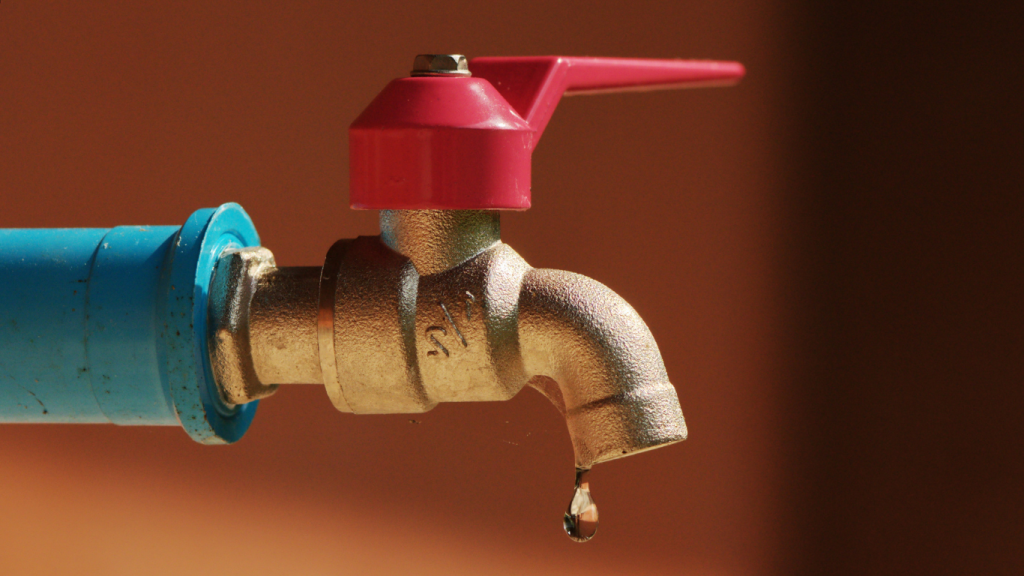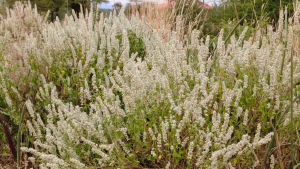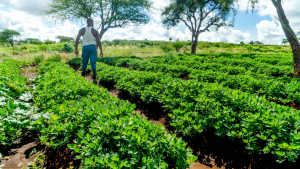
In the semi-arid regions, such as Kimana, Kajiado where Ambokili Farm is located, water is as elusive as it is essential; a precious commodity. Our semi-arid environments present unique challenges. Here, rain is a fleeting visitor. Rainfall is scarce, and evaporation rates are high. Here, every drop of water is a treasure, a lifeline that sustains life, agriculture, and economies.
As the sun beats down relentlessly, and rain is a celebrated visitor, lies a challenge and opportunity as old as time—water conservation.
From ancient techniques to modern marvels, let’s explore Ambokili Farm’s journey through the innovative and sustainable methods of water conservation tailored for semi-arid areas, a testament to ingenuity and resilience.
The Critical Importance of Water Conservation in Semi-Arid Areas
Water scarcity is a harsh reality faced by millions living in semi-arid regions around the globe. With erratic rainfall patterns and soaring temperatures exacerbating the situation, the need for effective water conservation measures has never been more pressing. The delicate balance between conservation and consumption is crucial for the survival of not just the human population, but also the flora and fauna that call these areas home. As climate change exacerbates water scarcity, the need for effective conservation methods has never been more urgent. Fortunately, human ingenuity knows no bounds, and communities here at Ambokili Farm, are harnessing innovative methods to preserve every precious drop. In this blog, we’ll explore a repertoire of water conservation strategies tailored to the unique challenges of semi-arid areas.
The key to success in semi-arid areas lies in a two-pronged approach: saving every drop that falls and using water wisely.
Harnessing Ancient Wisdom: Traditional Water Conservation Techniques
Our ancestors knew the value of water, and their ancient techniques provide valuable lessons for today’s water conservation efforts. From the sophisticated qanat systems of ancient Persia to the rainwater harvesting practices of indigenous communities, these methods are a testament to human ingenuity in the face of scarcity. By revisiting and adapting these techniques, we can develop sustainable water management practices that are both efficient and environmentally friendly.
Harvesting Rainwater:
Rainwater harvesting offers a simple yet powerful solution to capture and store this fleeting resource. From traditional cisterns to modern rooftop catchment systems, communities can collect rainwater for domestic use, irrigation, and replenishing groundwater reserves. By harnessing the power of precipitation, we can turn sporadic showers into sustainable water sources, mitigating the impact of droughts and water scarcity.
At Ambokili Farm, we have built a 450,000-litre reservoir where the runoff we capture through swales and terraces is stored. This has enabled us to irrigate our crops and have water for other farm activities.
Healthy soil acts like a sponge, soaking up and retaining rainwater. Embrace practices like mulching with organic matter (grass, leaves) to reduce evaporation and promote water infiltration. This not only conserves water but also improves your soil health, leading to more vibrant plants that require less water!
The Power of Modern Innovation: Advanced Water Conservation Strategies
While traditional methods lay the groundwork, modern technology offers new avenues for conserving water in semi-arid areas. Innovations such as drip irrigation and soil moisture sensors revolutionise agricultural practices, minimising water wastage and maximising efficiency. Meanwhile, desalination and wastewater recycling present promising solutions for augmenting water supplies. These advanced strategies, powered by cutting-edge research, are pivotal in our quest for sustainability.
Drip Irrigation and Mulching:
In a landscape where every drop counts, conventional irrigation methods fall short of efficiency. Drip irrigation revolutionizes agricultural practices by delivering water directly to the roots of plants, minimising wastage and maximizing yield. Coupled with mulching, which conserves soil moisture and suppresses weed growth, this method proves indispensable in semi-arid areas. By optimising water use in agriculture, communities can cultivate crops sustainably while preserving precious water resources for future generations.
Greywater Recycling:
Greywater recycling offers a pragmatic solution by treating wastewater from sinks, showers, and laundry for non-potable purposes. In semi-arid regions where every drop counts, greywater recycling alleviates pressure on freshwater sources and reduces the strain on wastewater treatment systems. By closing the loop on water usage, communities can embrace a more sustainable approach to water management, one that conserves resources without compromising hygiene or comfort.
Desalination and Brackish Water Treatment:
For regions facing acute water scarcity, desalination emerges as a game-changer. By harnessing the power of the ocean, desalination plants convert seawater into freshwater, providing a lifeline for communities grappling with drought. Additionally, brackish water treatment offers a cost-effective alternative by purifying saline groundwater for various uses. While desalination and brackish water treatment pose logistical and environmental challenges, advancements in technology hold promise for making these methods more sustainable and accessible to semi-arid regions.
Community Involvement: The Keystone of Successful Conservation
Water conservation is not just a technical challenge; it’s a communal endeavour. The involvement of local communities in planning and implementing water conservation measures is crucial for success. Educational programs that raise awareness about the importance of water conservation and teach sustainable practices can empower individuals to make a difference. Furthermore, community-driven projects, such as collective rainwater harvesting systems, can foster a sense of ownership and responsibility towards local water resources.
Water Conservation Tips for Semi-Arid Areas
– Practice rainwater harvesting to capture and store rainwater for future use.
– Invest in water-efficient appliances to reduce water consumption.
– Use mulch and drought-resistant plants to minimise water usage.
– Monitor soil moisture to avoid overwatering crops.
– Educate the community about the importance of water conservation and share sustainable practices.
Why Choose Sustainable Water Conservation?
Choosing sustainable water conservation methods is essential for ensuring the long-term viability of water resources in semi-arid areas. These methods not only help in combating water scarcity but also protect the environment, support biodiversity, and promote economic sustainability by reducing the costs associated with water extraction and treatment.
The challenge of water conservation in semi-arid areas is daunting, but not insurmountable. By combining the wisdom of traditional methods with the power of modern innovation, involving communities, and implementing strong policies, we can ensure a sustainable future for these regions. It’s a collective journey towards safeguarding our most precious resource, and every step, no matter how small, makes a difference. Let’s embrace these methods and work together to conserve water, the lifeblood of our planet.
By embracing the principles of water conservation, communities in semi-arid areas can overcome the challenges posed by water scarcity. It is a shared responsibility, requiring the collective efforts of individuals, communities, and governments to secure a water-sufficient future for all.
FAQs
Q: What makes semi-arid areas unique in terms of water conservation?
A: Semi-arid areas are unique due to their low rainfall and high evaporation rates, making water conservation critical.
Q: How can individuals contribute to water conservation in semi-arid areas?
A: Individuals can contribute by adopting water-saving practices at home, such as fixing leaks, using water-efficient appliances, and practicing rainwater harvesting.
Q: Are modern water conservation technologies affordable for communities in semi-arid areas?
A: Many modern technologies are becoming more affordable and accessible, thanks to advancements in research and development. Community-driven projects can also help in making these technologies more accessible.






